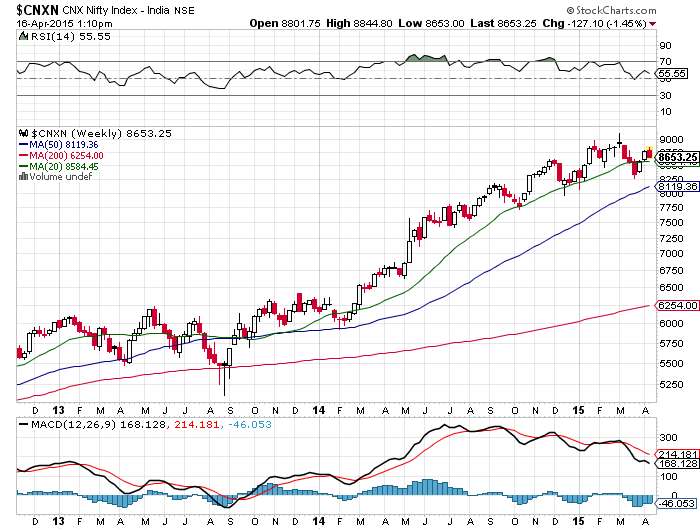Volatility in the market has been surging of late with the India Vix eclipsing the 20 level of late. I expect this to continue post the fed. A strangle can help capture market volatility on either side.
Nifty Current Spot: 8280

8300 April Call - 35
8200 April put -19
Break even = 54
Break even points -8354, 8146
You make money on either side of 8146, 8354
You loose money if market stays between the above two levels.
Nifty Current Spot: 8280
8300 April Call - 35
8200 April put -19
Break even = 54
Break even points -8354, 8146
You make money on either side of 8146, 8354
You loose money if market stays between the above two levels.
















